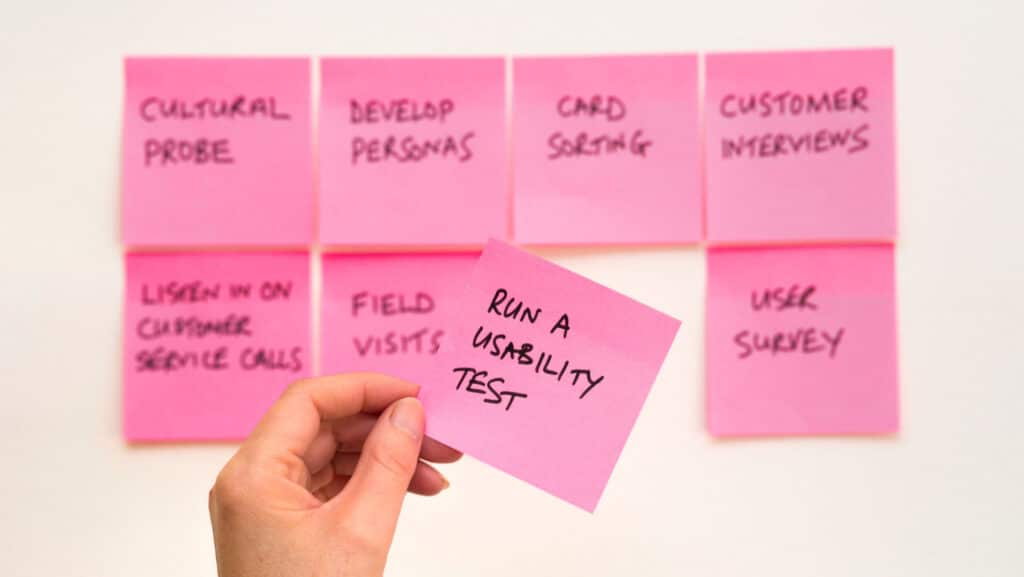Because digital transformation is now an urgent necessity for businesses of all sizes, the quality of an organization’s software — be that websites, mobile applications, or internal business systems — has become a key differentiator between firms trying to gain a competitive advantage and those that actually have one. With Agile testing, firms can rapidly develop and release software that users and businesses can depend on — reliable, defect-free software, that enhances the customer experience, improves organizational productivity, and generates new revenue streams.

What makes Agile testing “Agile”
In Agile and DevOps environments, testing is an ongoing activity not a phase tagged on at the end of a project or an activity limited to testers. Agile testing is a continuous effort and is team driven and adaptive. Testing is embedded throughout the software delivery pipeline, and everyone is involved — developers, testers, product owners, and domain experts. Testing starts early in the development process, and programmers and testers work together to create code that works.
Agile testing is also highly efficient. Testing requirements are prioritized based on risk, and automation is used to accelerate regression testing and other types of testing deemed suitable for automation. Automation and test automation tools enable testers to keep up with the rapid pace of Agile development workflows.
The advantages of Agile testing over traditional software testing
By leveraging Agile testing methods, organizations can obtain a wide range of benefits. Firms can use Agile testing to expedite the delivery of software without compromising on quality. More efficient testing contributes to cost reduction and helps boost productivity and improve team morale. The collaborative nature of and regular communication fostered by Agile testing help teams better understand product requirements and thereby deliver a better product, software that meets the needs of the business and users. Continuous feedback flows and increased visibility across teams and team members help eliminate ambiguity, minimize misunderstanding, and keep everyone on track.
The Agile testing toolkit: Development and testing methods used in Agile environments
There are five key methods or ways of approaching software development and testing used in Agile testing environments:
- Test-driven development
- Behavior-driven development
- Acceptance test-driven development
- Exploratory testing
- Session-based testing
In test-driven development (TDD), the quintessential Agile testing style, tests are created prior to writing code, and testing, programming, and design are deeply interwoven. Developers write “just enough” code to comply with a unit test, which describes a technical aspect of a program, and then refactor the code once the test has been passed. Acceptance test-driven development (ATDD) also uses a test-first methodology but takes it one step further by getting input directly from the customer or client regarding how the product will be used. Acceptance criteria are translated into tests against which code is written. The focus shifts from technical-facing unit testing to user POV-driven functional testing.
Behavior-driven development (BDD) is essentially a refinement of TDD and ATDD practices. It starts not with a test but with an easy-to-understand scenario or user story that is used to guide development and testing. It helps facilitate communication and foster collaboration among developers, testers, and product owners. The emphasis in BDD Agile testing is on supporting specific user behaviors and business outcomes.
In exploratory testing, testers mimic the way users interact with software. Testing is typically unscripted but not random or unstructured. Testers use their creativity and critical thinking skills to experiment with and find actions that will break the software being tested. Session-based testing builds on this approach and provides additional structure. Tests are carried out in time-boxed, uninterrupted sessions, forcing testers to further focus their efforts and report on their findings from each session.
The collaborative nature of, and regular communication fostered by, Agile testing helps teams better understand product requirements and thereby deliver a better product.
Best practices for Agile testing: Implementing testing effectively in Agile environments
Agile testing is not simply a matter of picking and choosing from the various programming and testing methods described above. It requires all those involved in testing to have broad skill sets and a willingness to embrace and adapt quickly to change. The success of Agile testing, and really any initiative using the Agile methodology, also depends on how effectively team members are able to communicate and collaborate on a day-to-day basis. Team members must be willing to provide timely feedback and use the feedback they receive to continually refine their work and work method.
There are also some key best practices that development and testing teams can follow to help improve Agile testing outcomes. It is suggested that Agile teams:
- Start testing early. Get testers involved in the software development process right off the bat and allow testers and QA managers to work in parallel with developers.
- Test frequently but judiciously. Eliminate unnecessary tests and boost efficiency by focusing testing efforts on the most relevant and important scenarios and situations.
- Use risk-based testing to prioritize areas of high business risk. Identify which tests are most valuable in order to achieve optimal risk coverage and strengthen the end product.
- Leverage test management tools that can help you embed testing across the software delivery pipeline and provide stakeholders with full-scale visibility and traceability.

Agile testing automation and test management tools for the enterprise
Tricentis has developed a suite of Agile testing tools that can help your organization accelerate and rapidly scale test automation as well as streamline test design, build, and management workflows. Tricentis Tosca is a next-generation Continuous Testing platform that can be integrated directly into your CI/CD pipelines and “best of breed” DevOps ecosystems. Tosca’s AI-based, no-code approach makes automating end-to-end testing simpler and easier, letting you scale functional test automation across hundreds of technologies. Leverage Tosca to deliver continuous feedback in Agile and DevOps environments, reduce regression testing time, ensure optimal risk coverage, and integrate and extend your existing test assets.
Team members must be willing to provide timely feedback and use the feedback they receive to continually refine their work and work method.
Tricentis qTest is an easy-to-use yet powerful test management solution that was designed to help organizations test smarter, test faster, and test at scale. qTest works seamlessly with open-source frameworks as well as commercial test automation tools and enables centralized management of Agile testing initiatives. It keeps teams and their tools connected — offering crystal clear visibility and full-scale traceability across the development pipeline. qTest can help your organization fully embrace Agile. Enhance collaboration, eliminate QA bottlenecks — and increase speed to market without sacrificing on quality — with Tricentis’s modern test management solution for the enterprise.